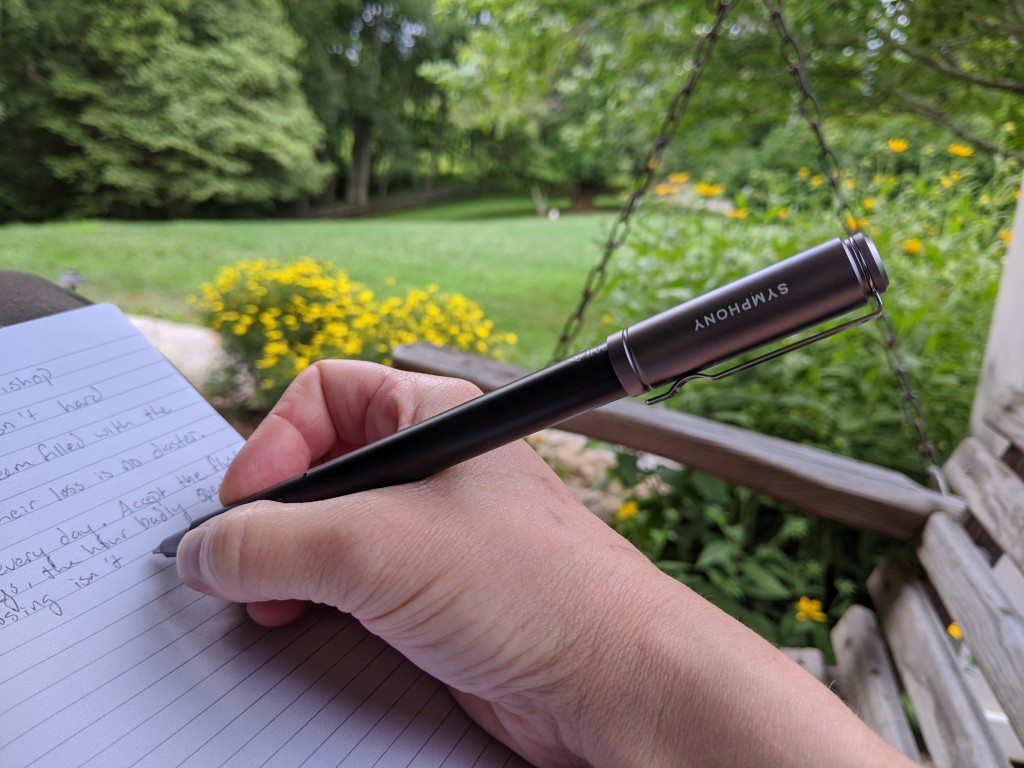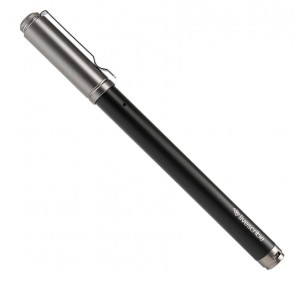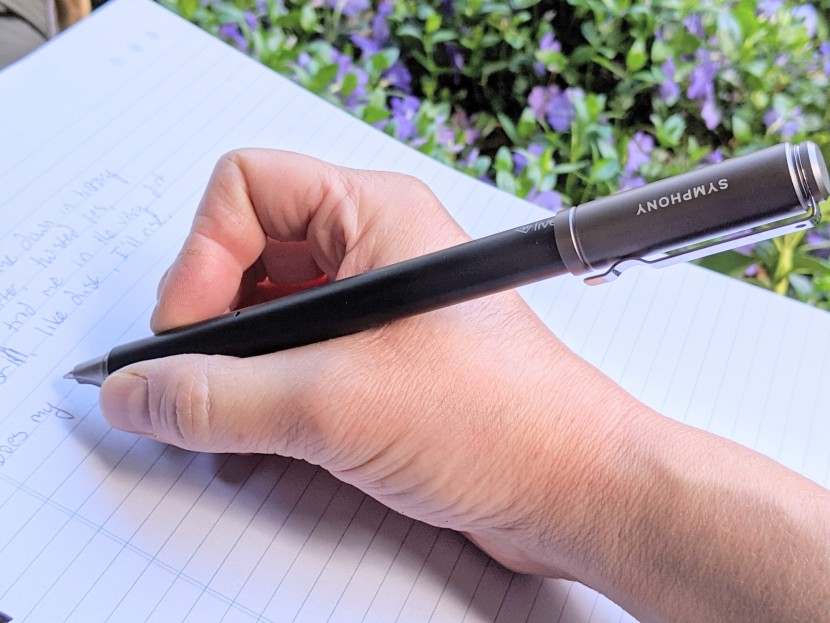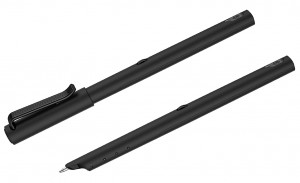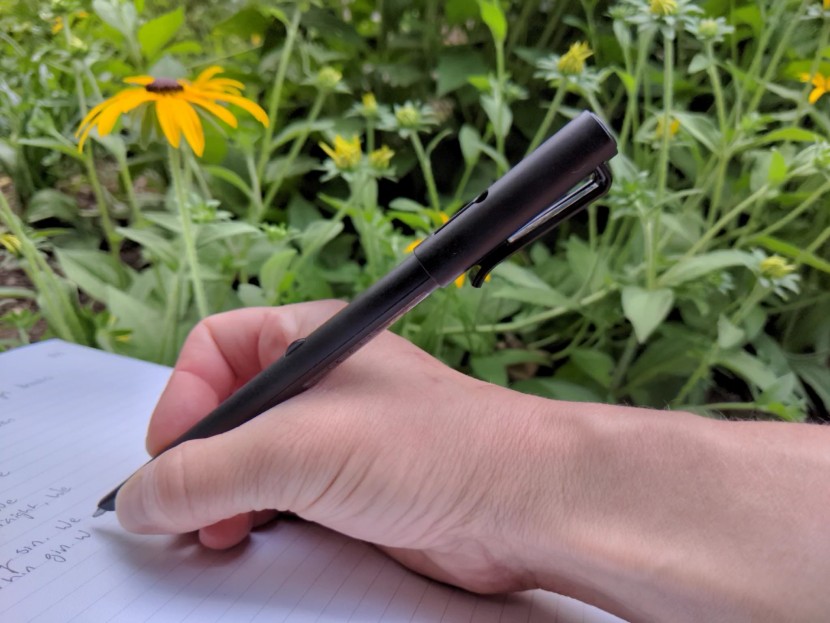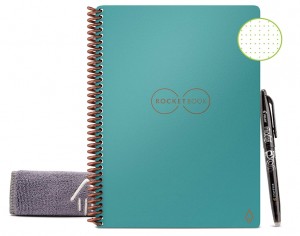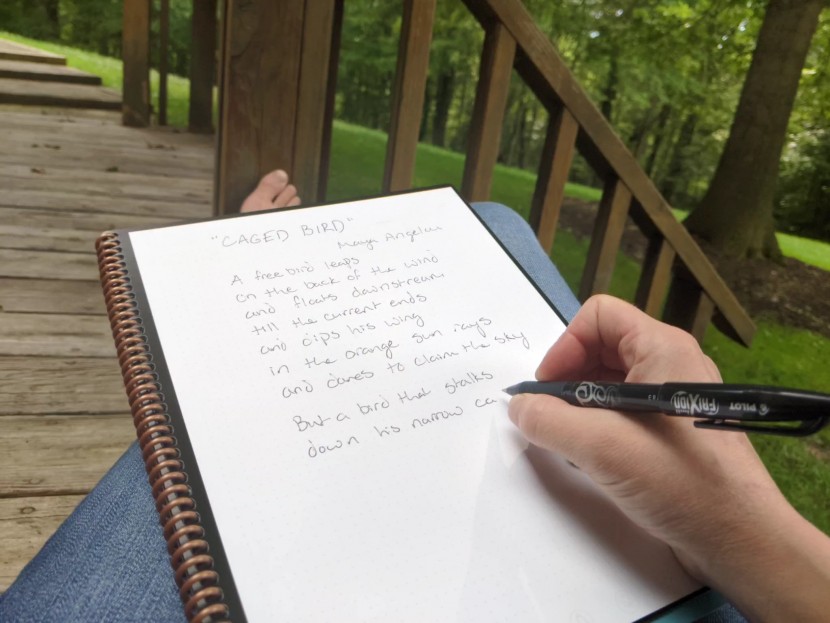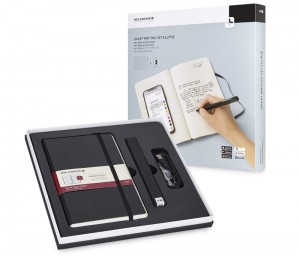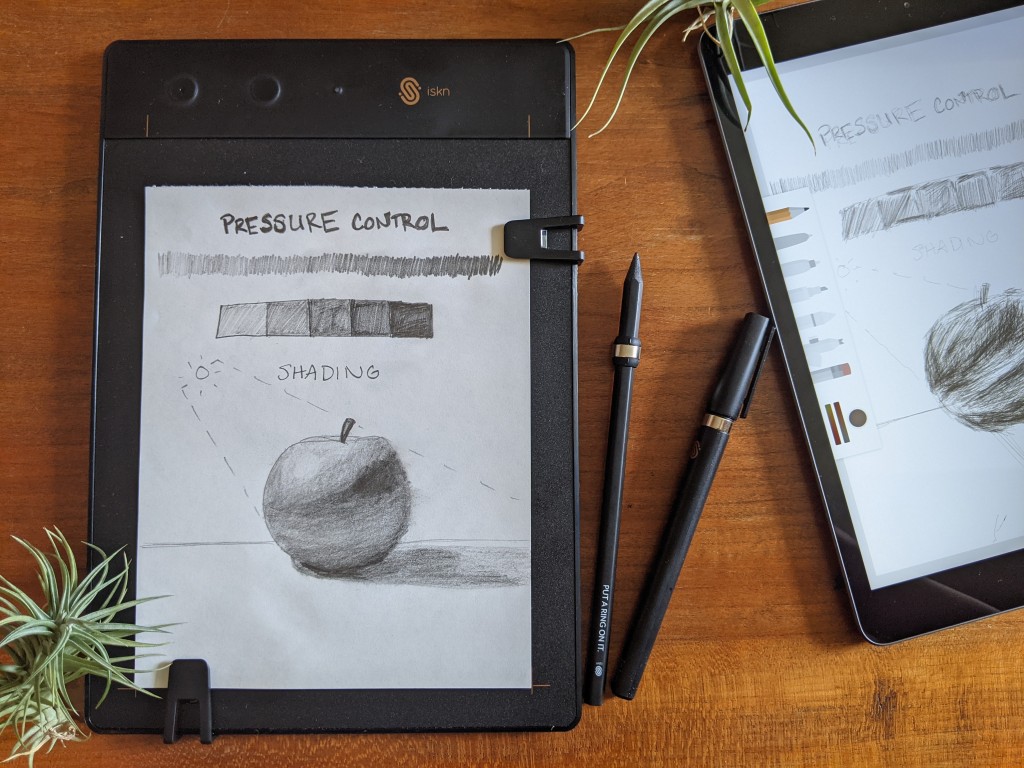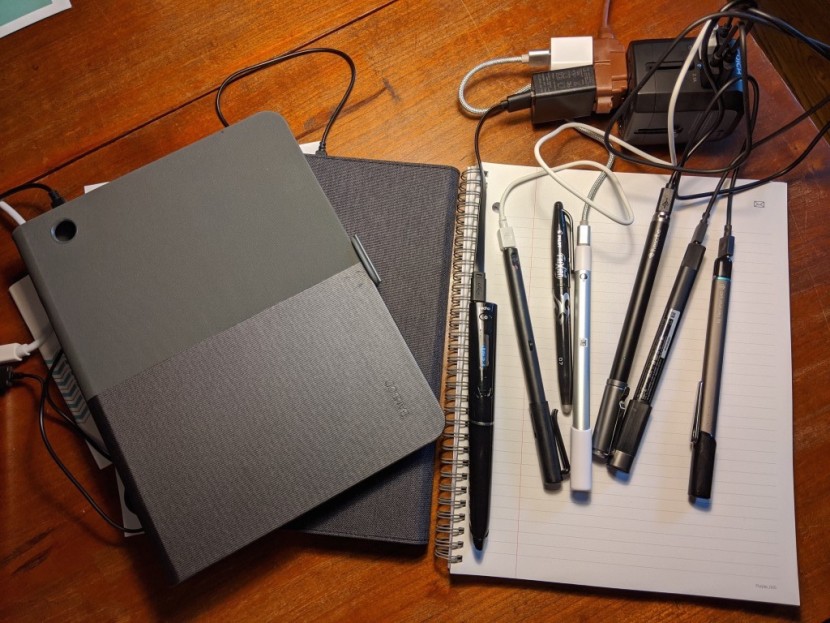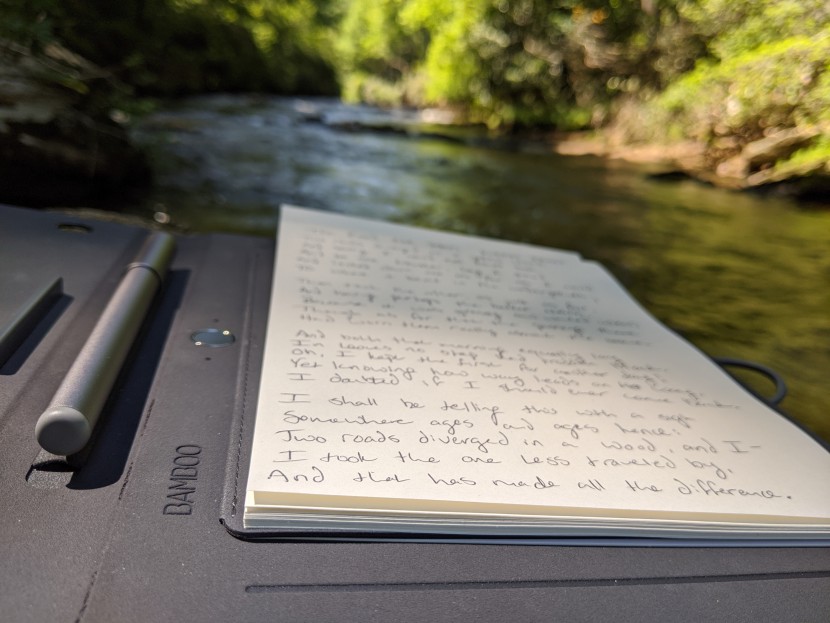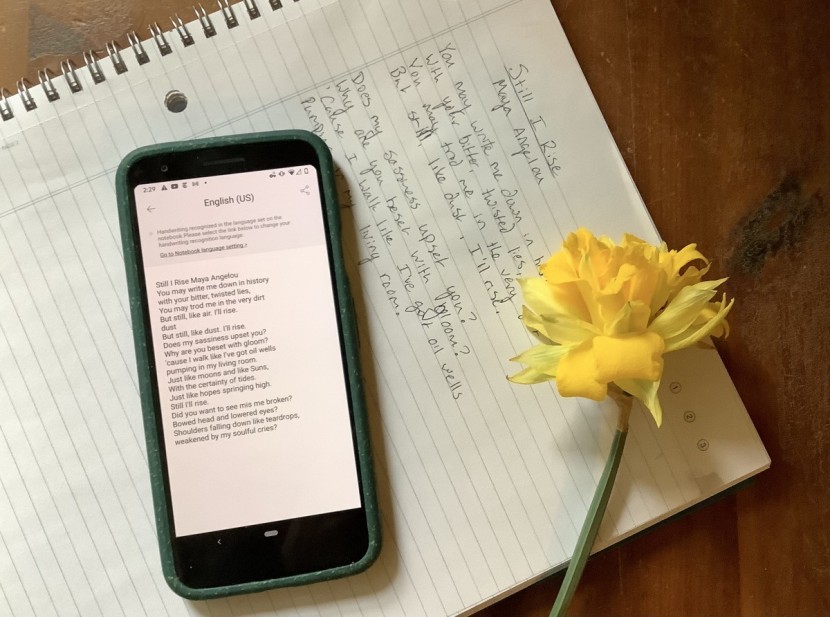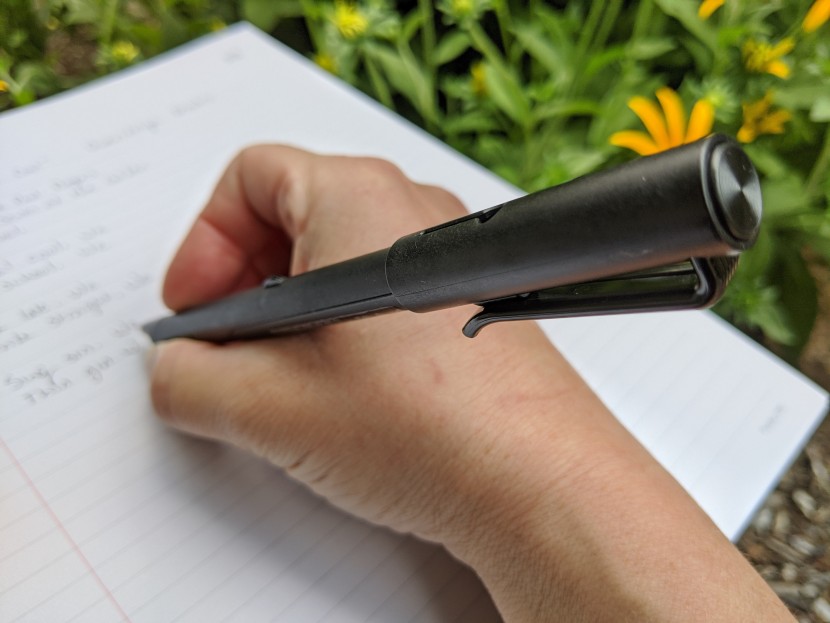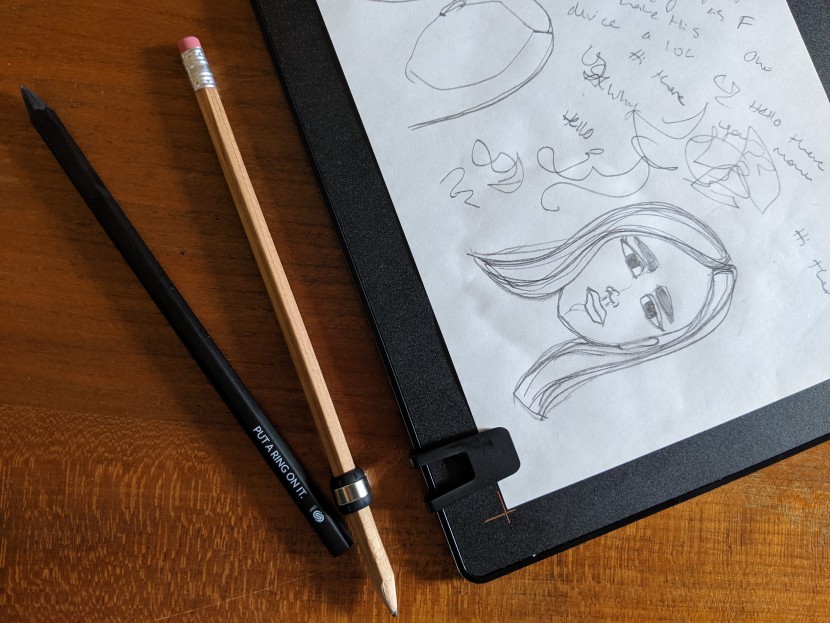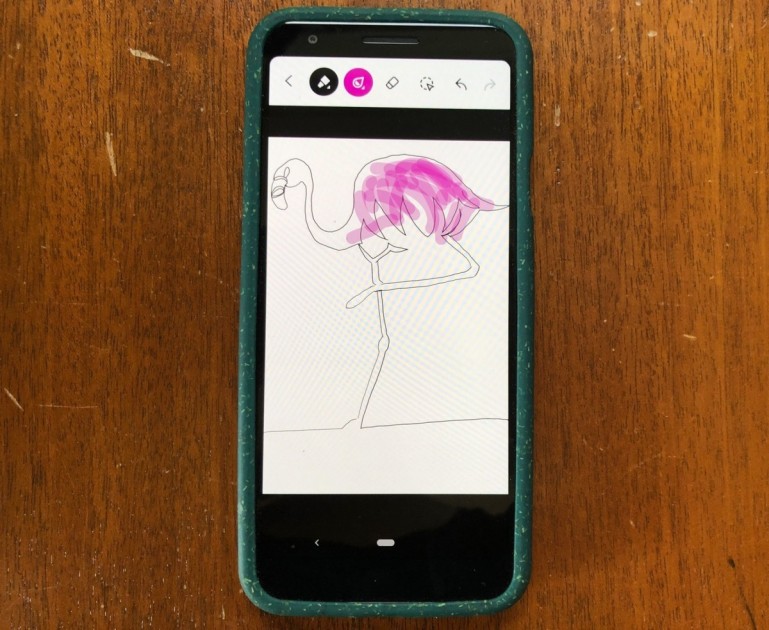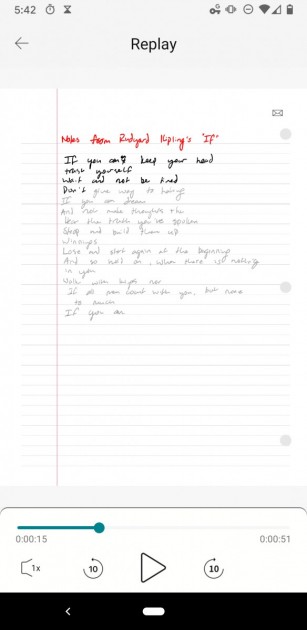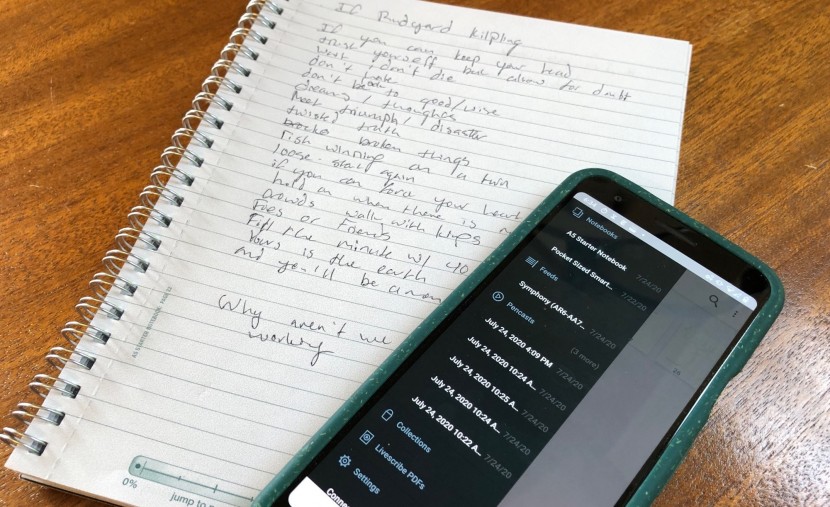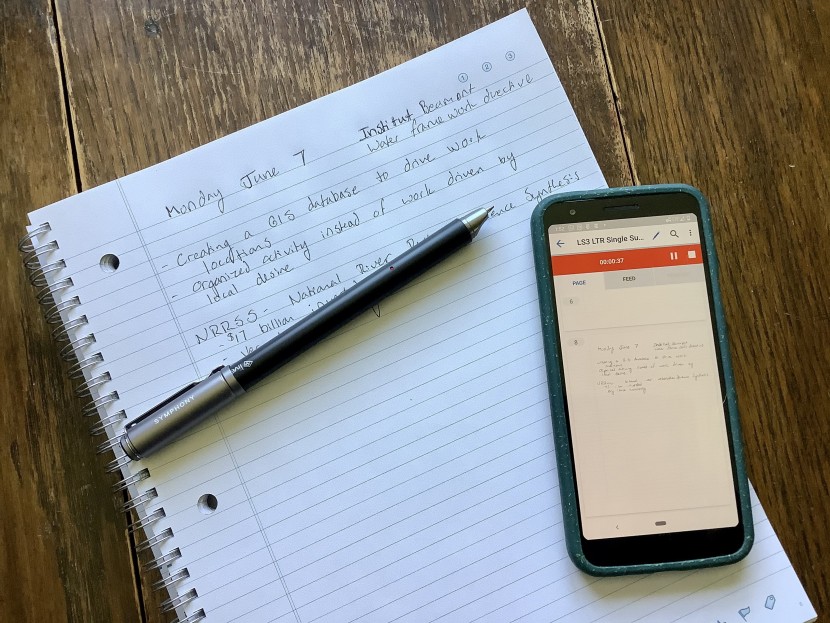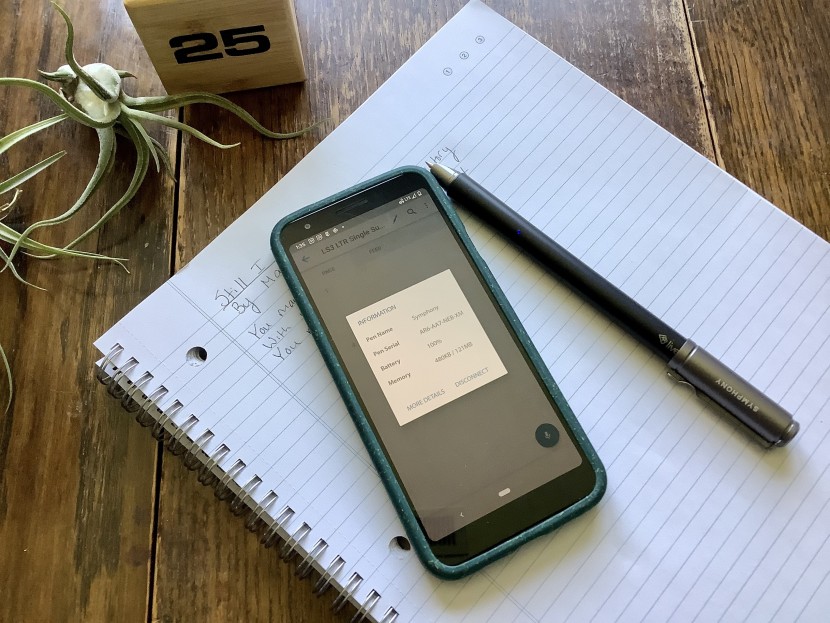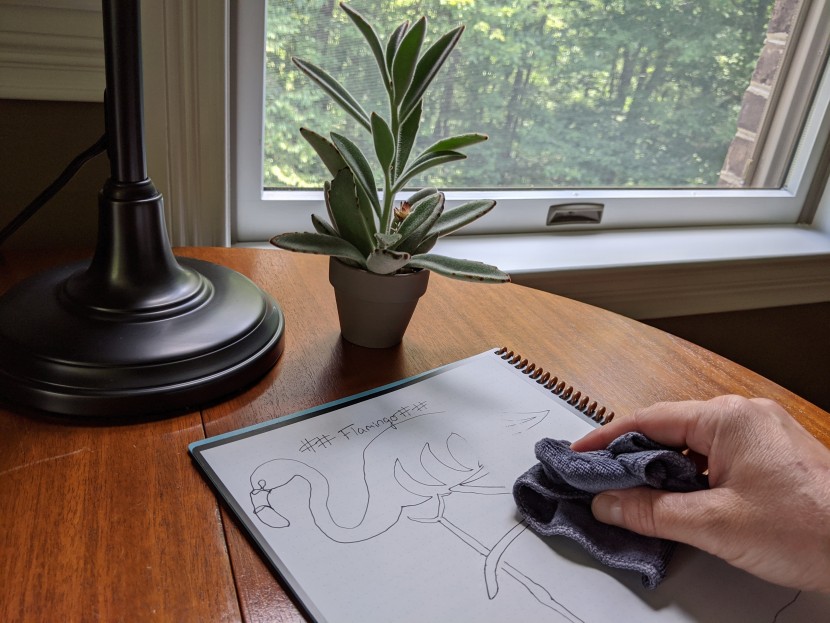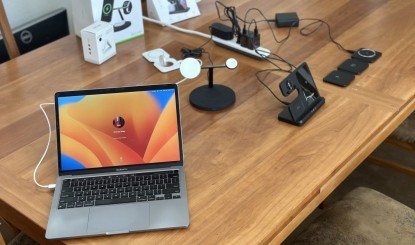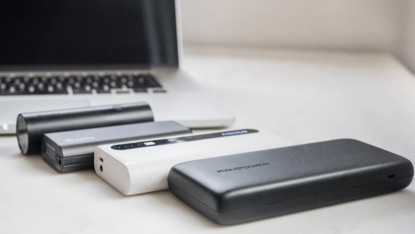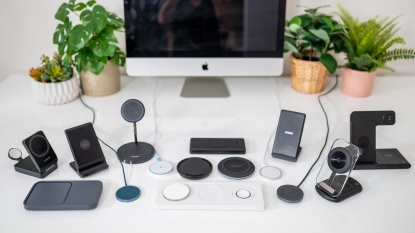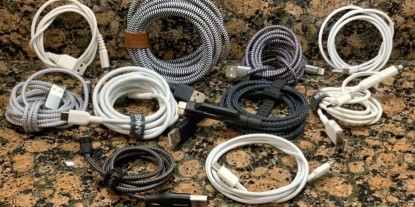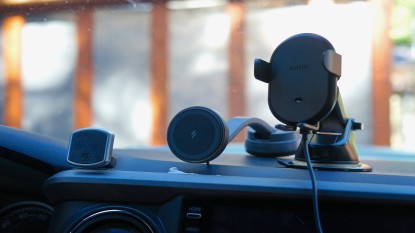Looking for the best smart pen to digitize notes and drawings available today? We bought 5 of the most promising to test side-by-side. To help you save your brilliant thoughts in the cloud while freeing yourself from screens, we took notes at conferences, drew charts, and doodled brainstorms. Our writers drafted articles on mountainsides and tested the pens' skill at transcribing sloppy handwriting to legible text. We recorded meetings and interviews with accompanying apps and made sure we could catch every word on the playback. Some soared and others flailed. This comprehensive review will navigate you to the right tool for your needs.
While smart pens are a great option to disconnect, sometimes it is easier to pair a stylus pen with your tablet or Chromebook. If you are writing on a tablet, it is also helpful to have a sturdy tablet stand as a backing. You can ensure your devices always have power with a top power bank or charging station. Whatever your needs may be, our tech experts have tested the best electronics on the market.
Our Top Picks
5 Best Smart Pens
The Livescribe Symphony Smartpen wins top honors for its natural writing experience and intuitive Livescribe+ app. The pen is round, smooth, and one of the most comfortable in the test. When you write on the proprietary micro-dot paper in Livescribe's notebooks, the app will capture your musings in real-time, or whenever you next link it to the pen. It sorts them into digital representations of each notebook, lets you edit your writing or artwork, accurately translates your handwriting to text, and will search for keywords in translated or tagged text. The app will also record audio as a pencast through your phone while you take notes. The app sorts these audio files separately, and they are easy to find. You can also download videos of your writing or drawing in sync with the audio. The Symphony has an impressively long battery life with 10 hours of claimed writing time. We left it on for 7 hours and it still retained 99% of its battery life.
While the app makes it easier to deal with audio files, it makes it harder to transcribe text than the Neo Studio app that works with the Neo Smartpen M1+. The app randomly sorts your text into “snippets” that you must transcribe individually by swiping across them to the right or left. You can select and merge snippets that you wrote on a given page to recreate the notebook version. In contrast, the Neo Studio just transcribes a page at a time. Those extra steps are annoying but far from deal-breakers. We recommend this pen for its long battery life, accurate transcriptions, excellent audio file storage, and relatively low price tag considering its strong performance. Put simply, it is more capable than any other smart pen in our line-up.
The Neo Smartpen M1+ also has a comfortable round shape like the Livescribe Symphony and non-smart pens. It's easy to write with, turns on when you start writing or press power, and can be linked to the Neo Studio App to show your writing in real-time, or you can upload it after the fact. You can transcribe handwriting into text by a page at a time, edit line strength and colors in the app, and record audio to sync with your notes. Scribblings are handily arranged by notebook (as well as Google Calendar or Outlook-synced planner) to easily distribute to your digital world. The app works in conjunction with this pen extremely well.
Unfortunately, the M1+ offers less accurate transcriptions from handwriting into text than the Livescribe Symphony. It still performs well enough to be helpful, and if you just need to go back over your notes to study, you may not use this feature very often. You also have to be sure to buy Neo's compatible notebooks, but that's the case with most smart pen options. All told, this is an excellent option with a great accompanying app. You'll just have to do a little more editing in post to touch up your notes.
The Rocketbook Smart Notebook and Pen are reusable in a way that really does save paper, unlike most of the options we tested. It's a notebook/whiteboard mashup with sneaky tech features. Recording your notes, drawings, and charts is a three-step process — write, scan, and send. The pen is small, easy to grip, feels like writing with a thin-tipped Sharpy on plastic, and the eraser works perfectly. You can buy all sorts of pretty colors or just edit the colors later in the Rocketbook App. The app scans each page you want to save by more or less taking a photo but cuts out any background. From there you can send everything to cloud storage or set up the shortcut symbols at the bottom of each page to do so automatically. You can also capture whiteboard notes by placing reusable stickers called Beacons in each corner.
While it does save paper, there are a few tradeoffs that come with it. For starters, the plastic pages don't feel like regular paper. The pages also emit a toxic plastic smell that lingers for a few weeks. It takes roughly 15 seconds for the ink to dry, so it's easy to smudge if you're not careful. The notebook pages don't rip easily, but the notebook will need respectful treatment to last. Additionally, the ink may stain if you forget to wipe the pages off for around a month, which is something to keep in mind. Rocketbook recently added an Optical Character Recognition (OCR) feature to convert writing into text. Unfortunately, it's the least accurate text transcriber in the test. For the price, though, it's a start. If you don't need high-quality text translations and are okay with whiteboard-level optics, the Rocketbook is a great product that could be super useful for kids, too.
Moleskine brings its trademark quality to the Pen+ Ellipse and its entire smart writing ecosystem. The pen itself is sturdy and writes well, picking up fainter lines than most in drawings. It has all the best features of the other pens. While writing, you can bounce between pages (which the pen recognizes with sensors) as you wish, sync audio recordings, and edit everything in the app, changing line thicknesses and colors later on. You can also search your notes by date, keywords (if you have transcribed the page you are looking for), and tags if you added them after the fact. Moleskin also offers a compatible notebook built to pull your illustrations directly into Adobe Creative Cloud and a planner that syncs with Google Calendar or any other online calendar you prefer. The Moleskine Notes App was originally powered by NEO Smartpen. Moleskine is reported to release a new Notes app soon though, so it is likely to change.
Unfortunately, Moleskine also brings its trademark high prices into this brave new writing world. The pen only works with specific Moleskine+ notebooks, so you'll have to keep up the habit. The pen is awkward at first, with a smooth, rectangular surface that feels unnatural. It didn't take too long for most of us to get used to it, but it's easy to accidentally tilt the pen while trying to get a good grip. Although not top-tier, its written and text transcription accuracy is still pretty good. This pen's battery life is one of the shortest in the test, so it helps to remember to turn the pen off every time you stop using it (otherwise, it powers off after 20 min). It all works well enough, but there are better options.
The Slate 2+ by iskn is an original offering. It's primarily a graphic tablet, a flat surface that digitizes anything you draw directly onto your computer, phone, or iPad screen. The Slate's innovation is that it gives you the option to lay a piece of paper on top, so you can see what you're drawing on the computer and on the tablet itself. You can also draw or write with your favorite pen or pencil, provided it fits the included ring. You can physically tether it to your computer, connect it via Bluetooth, or draw offline in what iskn calls screenless mode and upload it later. We tested the Bluetooth and offline functions, where the iskn works more or less like a smart pen, one made specifically for art.
The downside is The Slate does not transcribe text and does not have a search function for note-taking, so it works best for artists or those who want to capture the written word as is. The feature we were the most hyped about is the device lets you draw with your favorite type of pencil or pencil-sized pen, even charcoal. Sadly, it's not pressure sensitive, so it doesn't do a good job of picking up shading or gradients. Since this model is magnet-driven, it's very temperamental about being near metal (think your phone, computer, the brackets in your desk, even the pencil ring itself when you turn it on). You have to stay 20 cm away at all times to avoid dead spots or drifting lines. We found this surprisingly hard to achieve in our regular use, which became rather irritating. Even when we were far enough away from magnetic metals, it missed some strokes and added others. Switching between the included pen and whatever tool you have the pencil ring around is also tricky. If you really love simple pencil line drawings, this smart pen will capture those fairly well. Bear in mind, you need to keep your distance from any magnetic distractions.
Why Trust GearLab
For the seven years that Clark Tate has been writing for a living, and the six she spent as a restoration ecologist and coordinator before that, the woman has taken a lot of notes and ripped through a scary stack of notebooks. She's always torn between the storage benefits of typing notes and the joys of leaving home without a laptop and taking breaks to draft handwritten articles sprinkled with sand on remote beaches. She's pretty much been dreaming about digital pens her entire life and couldn't wait to get her well-developed writing hands on a large selection of them at once. As a journalist, she uses a toolbox of devices to record phone calls and interviews and demands seamless tech — because the robots should work for us, not the other way around.
To test these pens, our write-happy testing team toted them to all of our favorite outdoor scribbling spots. For weeks we took notes during meetings, conference calls, and interviews. We drew and journaled and packed the pens up in bags to see how they handled themselves in the real world. To test accuracy, we (1) wrote out Maya Angelou's famous poem “Still I Rise” in our normal, sloppy handwriting, converted it to text, and counted the number of missed words, (2) did the same for a short Hafiz of Shiraz poem that we wrote carefully and clearly. To test audio recording functions, we took notes on Sir Michael Caine's reading of “IF” by Rudyard Kipling.
Analysis and Test Results
Smart pens have been evolving rapidly over the last decade. Many have fallen behind the tech curve while others continue to rise to the occasion. Here we explain what we learned about how accurately they convert our scribbles to text, how easy they are to use, and how long their batteries hang in there. Overall, these are super useful tools when in the right hands.
Handwriting can make studying more effective, and experts laud the mental health benefits of journaling, and of journaling about gratitude in particular. According to the Mayo Clinic, reducing screen time can help you lose weight, improve your health and relationships, free up time to try new things, and put you in a better mood.
Transcription Accuracy
These pens are, for the most part, good at picking up pen strokes. All of the award-winning options transfer your writing and art faithfully. In contrast, the Moleskine didn't earn top marks because it cut out a line or two of our art challenge, whereas the iskn lost points for adding a few.
What we mean by accuracy is how well each pen's app digitizes your writing and how well it translates your writing into text. This has a lot to do with how easy it is to use your pen correctly. If it's hard to maintain the orientation and angle necessary for the pens to properly capture your handwriting or drawing, accuracy will suffer. We break down how easy each pen is to hold and wield in the next section; here, we're just talking results.
The Livescribe Symphony earns top marks here. It perfectly recorded our drawings and only missed a few words here and there in the transcription tests, even the one where we wrote in our normal (read: terrible) hand scribbles. The Neo M1+ came in right behind the Livescribe in this performance aspect.
The Moleskine Pen+Ellipse performs pretty well regarding transcription but did miss more than 10 words. The top performers missed no more than five words in our transcription accuracy tests. The Slate 2+ did not fare well. It offers no text transcription and does not consistently capture all pencil or pen strokes for either drawing or writing.
Ease of Writing
The better handwriting you have, the more accurately your words, drawings, and charts will be recorded. This can be challenging in our keyboard culture. Luckily our testers are analog and like putting pen to paper. We wrote out notes for weeks to find out that some of these smart pens are much easier to hold and move with precision than others.
The Rocketbook works very well in this regard. It's as simple to use as a regular marker. As a bonus, you don't have to worry about this one getting wet, breaking, or holding a charge. The Livescribe Symphony and Neo M1+ are next in line. They are round, like regular pens, and easy to hold. Of them, the finish on the Symphony is the most pleasant. The problem with these pens being round is that it's easier to let the sensor in the pen rotate sideways or upside-down, making it less accurate. This seemed to be less of a problem for the Symphony in our use.
To combat the twirling issue, pens like the Moleskine Ellipse take unconventional shapes. This pen is rectangular, which feels weird at first, but we did eventually grow accustomed to it.
The iskn option includes a round, easy-to-use pen and a ring sensor that you can add to any pencil to digitize your drawings. The pen is very easy to use and the ring stays mostly out of your way. Both provide a relatively seamless writing experience, but the pad beneath them is small, severely limiting your digital canvas.
Is the App User-Friendly?
Between syncing to pens, uploading notes taken offline, editing and sharing files with friends and cloud storage services — we put each smart pen's app through its paces to find out which is the easiest to navigate. All of the app-based pens provide tools for you to edit your text and images. It's a fun and useful feature that works well in our award-winning field.
Each smart pen ecosystem requires you to write in their branded notebooks, (except the iskn the Slate 2+, which works with any standard A5 notebook paper). The branded notebooks have faint microgrid patterns that help the pens map their movements. The Neo, Moleskine, and Livescribe apps all recognize and automatically register each new notebook you use, so they record your notes on the appropriate page and in the appropriate book. If you're synced with the app while writing, this is all done in real-time. These apps accomplished this flawlessly.
We liked Neo Studio and Moleskine Notes best (though the second is getting an update soon that we haven't tried out). At the time of testing, we found them both to be user-friendly, offering smoother text translation services than the rest. Since you can search text you have translated, this makes a big difference.
Livescribe's app is similar. It's also easy to navigate your notes and share them. The difference is that Neo's option is more visually appealing, streamlined, and lets you transcribe an entire page of notes into text at a time without much fuss. Livescribe breaks your text into “snippets” in a separate tap and has you swipe them into text one at a time. Then you have to merge them back together or send them to your email or cloud service separately. It's not hard, but neither is it streamlined.
While the Neo Studio app shines at transcriptions, the Livescribe option makes it easier to find your audio files, calling them out separately from your written notes in the main menu. You can tag recordings in the Neo app to make them more searchable, but it is an extra step.
Features
The most important feature in this test that not all of the smart pens share is the ability to record audio. If you're taking notes at a conference, in a meeting, or during an interview, it's so much easier to relax and take in the information if you know you can go back over it later. The Neo, Livescribe, and Moleskine pens all offer this feature via their app, so via your phone.
All provide an easy-to-activate microphone button whenever the pen and app are connected. Once you press the record button, your phone will pick up any audio around you and sync it to the notes you take. When you go back through your notes on any of the apps, you can tap words to jump to the associated audio. The Windows version of the Neo app does download audio files, but the iOS and Android versions do not. But, we don't often find the need to share audio files, and for most note-taking purposes, app-based recording worked well.
The Livescribe app employed by the Symphony and the M1+'s Neo Studio app lets you download a video of your notes, using your note-taking as a visual and the lecture as a soundtrack. We're not entirely sure how many folks will find a use for this option, but the option is there nonetheless.
Battery Life
If you get into the habit of plugging your pen into your commuter in between meetings or lectures, you won't have to worry much about battery life. If you need your pen to last through long days with few breaks, it may be very important to you.
The Rocketbook really wins this one. Since it doesn't require a battery to operate, you'll never run out of juice. Second in line is the Livescribe Symphony, which claims that it offers up to 10 hours of writing time. While we didn't write with it for 10 hours straight, we did power all the pens up and kept waking them up every 15 minutes (most of them shut off automatically after 20 minutes) for 7 hours. Then we checked their charge. While the batteries will drain faster when you're using them, this gave us some extra evidence to weigh alongside our day-to-day experiences.
The Symphony still had 99% of its battery left. It also has a very rapid auto-shutoff. Since it doesn't have a power button, it automatically turns on when you start writing and goes to sleep within a few seconds of being set down, making it very efficient for charge preservation.
Most of these pens are powered by lithium-ion batteries. Remember that they shouldn't be tossed out in household trash. You can easily search online to find a battery drop-off site near you. You might have a collection point near you.
The Neo M1+ only claims 5.6 hours of continuous writing time. So you know you can't expect more than that. After 7 hours of activation every 15 minutes, the M1+ was still at 91%. Not bad.
Conclusion
So there you have it, the smartest pens money can buy. We hope this thorough review helps you find the perfect fit for your fingers and the right system for your note-taking needs.
—Clark Tate


